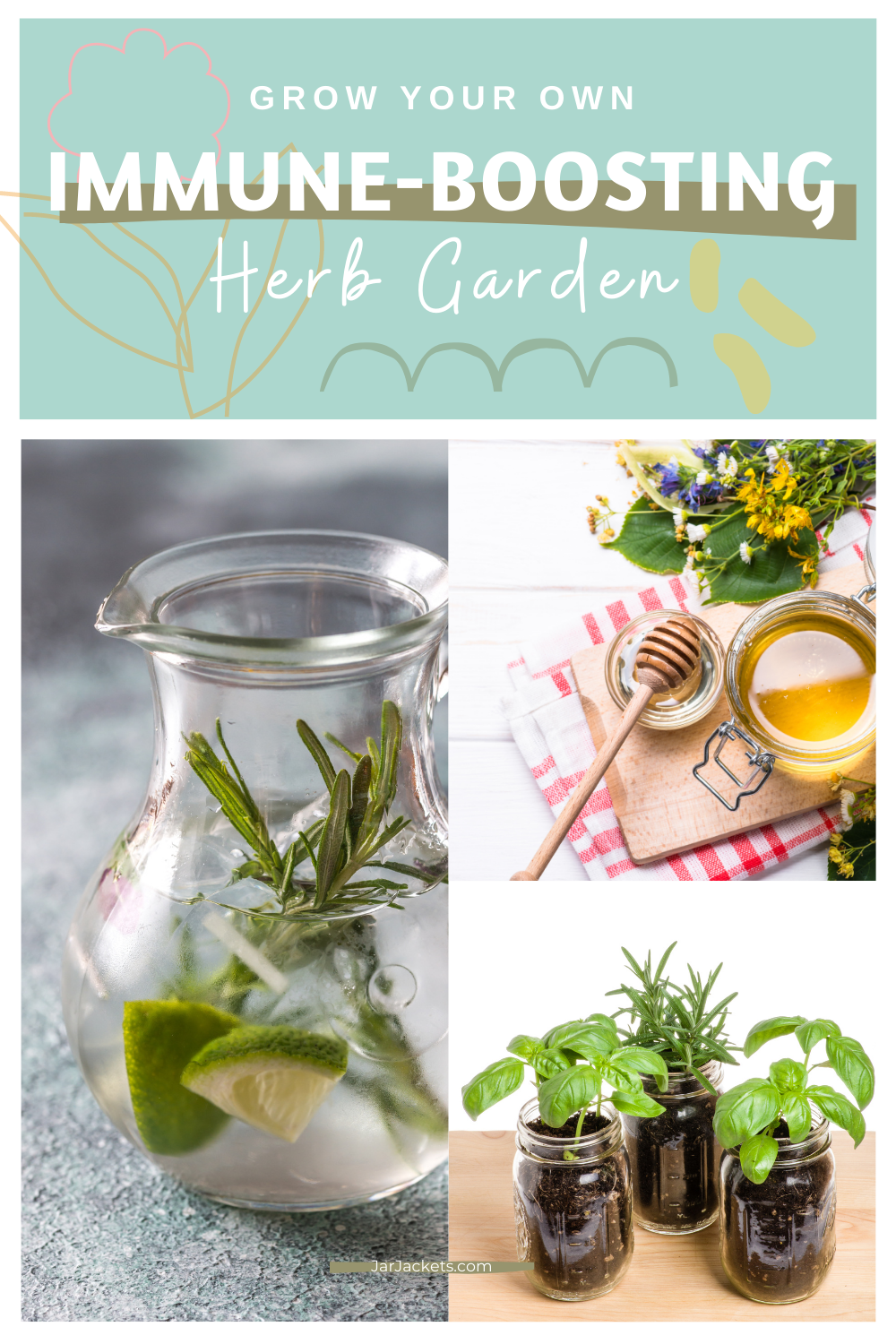Your Cart is Empty
FREE SHIPPING (US ONLY) ON ORDERS OVER $20
FREE SHIPPING (US ONLY) ON ORDERS OVER $20
September 14, 2020 5 min read

Ongoing concerns about COVID-19 has caused a surge in online searches on how to properly protect yourself against the virus. In addition to mask wearing and proper handwashing, what else can you do to improve your health? Researchers say we should focus on reducing stress and boosting our immune systems. But before you scour Amazon for the latest immune-boosting supplements why not consider growing your own?
Gardening has benefits aplenty, from relieving stress to improving mood. One experiment by NASA found working with plants improved psychological well-being for astronauts in the harsh environment of outer space. Another study found gardening decreased levels of cortisol, the body's stress hormone, improved mood, and reduced feelings of stress. Other research links gardening with reductions in anger, fatigue, depression and anxiety, and even viewing plants can reduce blood pressure, pulse rate, and muscle tension. Gardening may also support the immune system; the "hygiene hypothesis" says beneficial bacteria found in soil can improve the microbiome and enhance immune response.
Ready to get digging? Start with these five easy-to-grow selections.
Also called "purple coneflower," echinacea has long been used to support immune health. It's native to North America, and grows well in most temperate climates. Echinacea is rich in phytochemicals that enhance immunity, reduce inflammation, and protect against viral infections; while Echinacea purpurea is the most common, research suggests benefits from multiple varieties.
_ How to use it: _ You can use the petals, leaves, and roots of the plant. To make a tea, harvest flowers while they're in full bloom but before they start to fade. Cut them off at the stems, right above the first or second set of leaves. Rinse them off, tie stems together, and hang to dry with the blooms pointing downward. Loosely tie a paper bag around the stems to catch petals as they drop, and store dried leaves and flowers in a glass jar. For tea, steep 2 tsp. in a cup of boiling water for 20 minutes, then strain. To use the roots, harvest them in the late fall; wash them well, cut into half-inch segments, and lay out to dry, away from direct sunlight. When roots are completely dry, store in a sealed glass jar. For tea, combine 2 tsp. of dried roots with a cup of water; simmer, covered, for 30 minutes, then strain and drink.
A staple in Mediterranean, Caribbean, Central American, and other cuisines, this member of the mint family grows in a variety of regions, and thrives in sunny, less-humid conditions. It's rich in thymol and other essential oils and compounds that support immune health and may protect against viral infections. Studies show thyme also has anti-bacterial, antioxidant, and anti-inflammatory properties. The essential oils in thyme also help relieve coughs and ease congestion.
_ How to use it: _ Steep a few sprigs of fresh thyme in a cup of boiling water for 10 minutes, then strain. Or cut long sprigs, tie the stems together with twine, and hang to dry, leaves pointing down, in a cool, dark location. When they're completely dry, store in a sealed glass jar. For tea, steep 1 tsp. of dried thyme in a cup of boiling water. Or add a handful of dried leaves to a pot of boiling water, remove from heat, and use as a steam to relieve congestion and ease coughs.
This fragrant member of the mint family, native to Europe, grows well in a wide variety of climates. Carvacrol, limonene, and other antioxidant compounds that give oregano its distinctive flavor and scent also protect against viruses, bacteria, and other pathogens. Studies show these compounds reduce inflammation, support immune health, and may even fight antibiotic-resistant pathogens.
_ How to use it: _ For tea, steep a few sprigs of fresh oregano in a cup of boiling water for 10 minutes, then strain. Or make oregano oil: gather about two cups of oregano leaves, loosely packed. Gently crush leaves, half a cup at a time, with a mortar and pestle (you can also use a muddler). Pour one cup of warm olive oil over crushed leaves, mixing well. Transfer mixture to a glass jar with a tight-fitting lid and infuse for two weeks in a cool, dark location, swirling every day or two. Strain through a cheesecloth, discard leaves and store oil in a tightly sealed glass jar.
Also known as Melissa officinalis, this fragrant member of the mint family is native to Europe but it's easy to grow in a variety of climates. Lemon balm is traditionally used to relieve stress and insomnia, and studies show it may benefit immune health as well. It's is rich in a variety of phytochemicals that have antiviral, antibacterial, and anti-inflammatory effects. Studies suggest lemon balm essential oil can inhibit influenza virus replication, and water extracts enhance immune system activity.
_ How to use it: _Coarsely chop fresh leaves, steep 2 tsp. in a cup of boiling water for 10 minutes and strain. The fresh leaves have a bright, citrusy flavor that can be used in cooking; mince them and add to salad dressings, lemon scones, fruit salads, or citrus sorbets. To dry lemon balm, cut stems about three inches from the ground, tie the stems together with twine, then hang with leaves pointing downward in a cool, dark location. When they're completely dry, strip leaves from stems and store in a sealed glass jar. For tea, steep 2 tsp. of dried leaves in a cup of boiling water for 10 minutes, then strain.
This aromatic evergreen shrub has been used for thousands of years in both culinary and medicinal applications. It's native to the Mediterranean, but is relatively hardy in cooler climates and grows well in a variety of regions. Rosemary is rich in rosmarinic acid, carnosol, carnosic acid, and other antioxidant compounds that reduce inflammation, support immune health, and protect against viruses, bacteria, and other pathogens.
_ How to use it: _ Steep one large sprig of fresh rosemary in a cup of boiling water for 10 minutes, then discard sprig; or strip needles from fresh rosemary sprigs, loosely pack 1 tsp. into a tea ball and steep in boiling water. For a simple tincture, pack rosemary sprigs in a pint-sized glass jar, cover with vodka and seal jar; let stand in a cool, dark location for 4–6 weeks, shaking jar every day or two. Discard rosemary sprigs, and strain tincture into a glass jar with a tight-fitting lid.
Written by Lisa Turner for Better Nutrition and legally licensed through the Matcha publisher network. Please direct all licensing questions to legal@getmatcha.com.
A pint-sized mason jar is the perfect vessel to grown your own herbs right in the kitchen window. To ensure proper drainage it is recommended to put a few stones in the bottom of the jar before filling with potting soil.
To start from seed plant seeds a finger's depth in the potting soil, water thoroughly, loosely cover with a plastic bag and put in a bright sunny window until the seeds begin to sprout.
Comments will be approved before showing up.

April 26, 2025 6 min read
We all like the idea of making our families healthy meals, saving money and doing our part to cut down on waste.
But we also like the idea of getting a good night’s sleep, not having a huge mess to clean up in the kitchen after dinner and — just maybe — having time to watch a bit of Netflix or read a book.

April 16, 2025 4 min read

April 09, 2025 2 min read